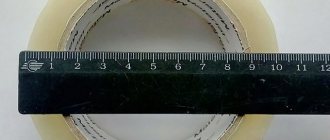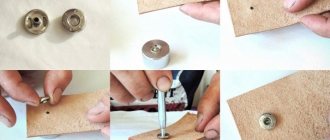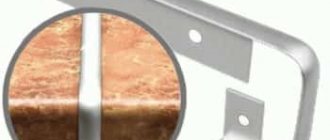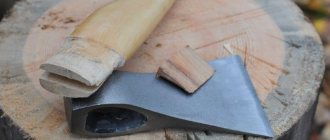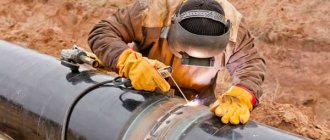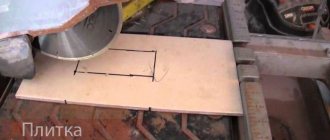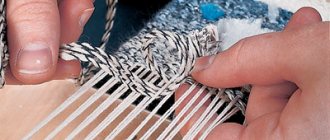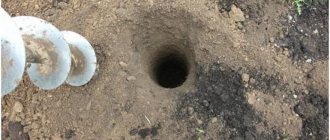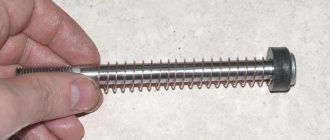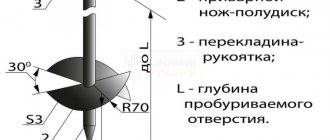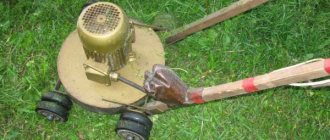Despite the abundance of modern means, lime is still in demand among summer residents. It is used to deoxidize the soil, to disinfect premises, and to protect trees. How to dilute lime correctly for each case?
Lime comes in different forms. Most often, summer residents use three types of whitewashing:
- quicklime (lumpy) lime is a white substance that is obtained by the decomposition of limestone; it contains calcium and magnesium;
- slaked (hydrated) lime, or fluff, is a white powder that is obtained by dissolving quicklime in a small amount of water;
- bleach (bleach) is a powder containing chlorine and slaked lime.
Lime is used on the farm not only for whitewashing, but also for other purposes:
- Why do you need slaked lime in the country house and garden?
Lime is used in the country to improve soil properties, increase productivity and during construction work. What is her secret?
Which whitewash is better - lime or chalk?
First you need to decide on the material that will serve as the basis for making the bleach solution. Chalk or lime are the most widely used options. However, every decision to whitewash a house has a list of pros and cons.
Lime is a type of composition for which carbonate-based rocks are burned. This is a relevant solution not only for the construction industry, but also for the production of compounds with various chemical properties. Lime whitening should be done using a slaked type of solution. It is obtained by combining water and lime powder.
Let us list the positive characteristics of lime whitening:
- ability to adhere well to any type of surface;
- tightening of small cracks during application;
- moisture resistance;
- resistance to temperature fluctuations;
- presence of bactericidal properties;
- affordable cost of the material combined with low costs during painting.
There are also some negative aspects, although the lime mixture does not have many of them:
- the likelihood of burns for those who perform painting;
- possible appearance of defects in the form of stains and stripes on the surface.
Lime, in fact, is a sodium alkali, therefore precautions are required, otherwise health cannot be protected.
But chalk is a material of natural origin, known and familiar to many. This finish has its own advantages:
- simple, safe painting work;
- easy rinsing, removal of layers on the surface;
- deep whiteness, whitewash does not turn yellow over time;
- environmental friendliness;
- affordable price.
There are also a couple of disadvantages:
- the likelihood of defects occurring during subsequent coating of walls with lime;
- unsuitable for use in damp environments.
Disadvantages of lime
The mixture has not only positive characteristics, but also disadvantages. Lime is a caustic material. This imposes certain requirements on safety measures both during the preparation and application processes. It is best to work in old clothes, which you can simply throw away later. It is necessary to protect the mucous membranes of the eyes, respiratory tract, skin of the face and hands - wear gloves, special glasses, and a respirator.
If you do not observe the proportions in preparing whitewash, or do the mixing incorrectly, then stripes, bubbles, and stains will appear on the surface being treated. A solution that is too thick will not only bubble during drying, but also fall off, while a solution that is too thin will not allow you to obtain the desired shade on the wall. To avoid poor-quality whitewashing, you need to dilute lime in strict proportions, follow the instructions and recommendations.
How to slak lime correctly and safely
The rules for preparing and slaking lime are required for those who have chosen this particular whitewash option when finishing. Lye is purchased in construction stores in slaked or unslaked form. With the first option, you can connect elements to work immediately. In the second case, before whitening, it is assumed that the composition must be extinguished.
It is important to make sure in advance that there is no health hazard. To ensure the necessary measures you need:
- achieve good ventilation of the room where whitening will be carried out;
- prepare a suitable bucket for the composition - lime is slaked only in metal containers;
- put on a respirator and protect your eyes with special glasses;
- You can’t do without overalls, headgear and rubber gloves.
The name quenching is given to the reaction during which the elements interact with each other. The result is a special powder or lime paste. The exact results are determined by the bases used. Next, we’ll tell you how to properly dilute lime:
1. Fluff is obtained by mixing lime and water in proportions 1:1. For example, one kilogram of dry material needs to be diluted with a liter of water. Lime powder is poured into a clean container, then everything is filled with cold water.
2. The lime gets very hot when it reacts. This causes hissing and splashing. At least 30-40 minutes should pass before everything calms down.
3. To stir the composition, use a wooden stick. The powder is obtained when the moisture finally evaporates. At this stage, it is considered that it was possible to dilute the lime for whitewashing.
For whitewashing and filling small cracks, a thicker composition is needed. Lime dough is a mass of plastic form, in the preparation of which alkali and water are used in a ratio of 1:3. In the future, the process is slightly different from the first option: we take a container with lumps of lime, gradually add water to it in small portions, and slowly stir everything with a brush.
Lime paste helps strengthen cement-sand mortars; the mixture helps in preparing materials for plastering work.
On video: recipe for making lime whitewash.
Precautions during operation
The rules for safe and proper self-preparation of slaked lime suggest filling the container no more than thirty percent. In this case, the ingredients should be mixed carefully and slowly to prevent the material from getting onto areas of the body. The lime solution can especially damage the eyes and skin of the hands. If this happens, you should immediately rinse the contaminated area with running water. Exposure to lime solution over a long period of time can cause damage to the internal tissues of the human body. After washing, it would be a good idea to consult a doctor to examine the affected area and take preventive measures to maintain health.
Immediately rinse the contaminated area with running water.
Do-it-yourself whitewashed walls are a profitable, simple and quick way to refresh your interior. Having figured out how to properly slak lime for whitewashing walls, you can easily complete the cosmetic renovation of the room.
Secrets of uniform whitewashing
Preparatory work
Windows, furniture, doors and floors in the house should be covered with plastic film, you can also use old newspapers, then cleaning the room will not be so difficult. Prepare working tools, in case of whitewashing the ceiling - a stepladder.
The surface also requires preliminary preparation. Old chalk whitewash must be completely removed, the same goes for crumbling plaster. The surface is cleaned of stains and dirt.
How to apply lime mortar
There is nothing complicated in the application process. Simply dip a painting tool (a wide brush or roller) into a container with whitewash. The solution is then distributed over the surface only in a thin layer. It’s good if you can use devices with long handles. They are easy to make yourself. Then there will be no need to make additional efforts during processing, and the whitewash consumption will not increase.
Application is carried out in several layers, at least 2-3. Each layer is applied perpendicular to the previous ones, then thickening and streaks will not appear, and the coating will be uniform. It is important to maintain time intervals between applying layers. For old ones, complete drying is mandatory. If you make the layers thin, this process ends faster.
Often areas appear in the corners without proper treatment. It is recommended to simply go over them again using a whitewash brush.
It is very easy to prepare the whitening composition yourself.
Primer for whitewashing
First of all, prepare a primer for the ceiling. First, take slaked lime (ideally it should be quite thick) - this is the so-called lime paste. Of course, it must be diluted with warm water. For two and a half kilograms of lime you need approximately five liters of well warm or even hot water. After this, dissolve one hundred grams of ordinary table salt in the mixture.
Add more warm water to the resulting mixture so that you end up with about ten liters of primer. If at this stage there are small particles in the composition, strain the primer through a sieve.
Finally, mix two hundred grams of powdered chalk in wood glue (ten percent). After thorough mixing, when the mixture becomes homogeneous, add it to the primer composition.
When preparing the primer lime mortar, mix it thoroughly at each stage. All ingredients should be evenly distributed in the mixture.
As a result, you will get a primer with which you can prime almost any surface for whitewashing. The mixture is applied with a paint roller or brush.
Preparation of whitewash
There are several common recipes for making whitewash. Perhaps the most popular and simplest one is made from warm water, chalk and wood glue.
To begin, heat approximately five liters of water. The water should be well warm, but not too hot. The optimal water temperature is fifty degrees. Then little by little dissolve three kilograms of sifted chalk in water and add thirty grams of wood glue. This amount of whitewash should be enough to treat fifteen square meters of surface.
The following composition has not become as widespread as the previous one, but it provides the highest quality whitewash.
To prepare a whitening composition according to this recipe, dissolve sixty grams of laundry soap in four liters of hot water. Then add fifteen grams of blue or ultramarine and ninety grams of wood glue to the soap solution. Chalk should be added to the resulting mixture at the very end - approximately two and a half kilograms. This amount of whitewash is enough to treat ten square meters of ceiling or walls.
The third most popular whitewash recipe is called “lime whitewash.” Dissolve two to three kilograms of slaked lime in five liters of warm water. Then, add one hundred grams of ordinary table salt, half a kilogram of dyes to the mixture and bring the volume of the mixture to ten liters. It might not hurt to add a little blue to the whitewash.
By the way, experienced craftsmen claim that table salt for whitewashing can be replaced with potassium alum. True, salt is still simpler - it can be found in any kitchen.
Do it yourself
DIY swing for children Our children are always in active motion, so let's try to diversify their relaxation with the help of a swing. Let's start with a simple option. Children love swings, which...
How to make a bed. DIY laminated veneer lumber bed. The bed is a very important element of any room, be it the bedroom of adults or children. A large comfortable bed in your bedroom is the key to sound sleep and good mood throughout…
DIY wardrobe Today, many owners of both small apartments and large houses are thinking about purchasing a wardrobe. Unfortunately, it is not always possible...
Do-it-yourself corner sofa Of course, a sofa is considered one of the main elements of furniture in the house. This thing is extremely necessary and useful; in addition to a comfortable rest, you can hide a lot of household items in it,…
Do-it-yourself screen Some people think that screens are a thing of the past, not fashionable and worthless. Meanwhile, the screen is a very convenient and beautiful tool for zoning a room. There is a screen in the living room...
The Best Alternatives to Brushes
Using brushes used to be the only available solution for whitewashing walls. But thanks to modern technologies, repair costs are significantly reduced, and large spaces can be whitewashed. Brushes remain relevant only for rooms with a small area.
The following devices greatly facilitate the work of whitewashing a wall:
- Spray guns for whitening. You can use the same tools as for plants, for example, a sprayer. The main thing is to have a container with a volume of 5 to 15 liters.
- Special apparatus for whitewashing with lime. Useful when large areas are being processed. The principle of operation has much in common with a spray gun.
- Spray gun. Thanks to this tool, lime is easily distributed over the surface.
There are several types of spray guns available: pneumatic, electric, manual. The latter are the best option when processing small areas. Devices of different types operate according to a similar scheme. Electric ones cost more than manual ones. But they also distribute the lime better.
Uniformity of layers per 1 m2 and simplification of work are the main advantages that distinguish any such devices. The labor intensity of the process becomes minimal, and the whitewashed ceiling has no streaks or other defects.
Whitewashing process with a spray gun
Follow these tips when whitewashing:
- For work, the lime composition is additionally diluted and filtered if the work is carried out using spray guns or sprayers.
- The lime whitening solution is mixed before adding each new portion.
- The surface must be slightly moistened before applying the material.
- Limestone whitewash is poured into the spray gun, and air is pumped into it. The spray nozzle is adjustable to ensure even material distribution.
- If problems arise with spraying, then the material is too thick. You need to add water to dilute even more if necessary.
- The distance between the surface and the sprayer should not exceed 15-20 centimeters.
- Application requires circular and smooth movements.
- New layers should be applied at intervals of one and a half to two hours.
Quicklime
It is used as a binder for cement mortars and various types of plasters. It increases adhesion between coatings and the treated base, gives plasticity to the materials, but is absolutely not suitable for whitewashing wall surfaces. If for some reason there is no ready-made fluff in the form of dough or powder, the lime is slaked.
On an industrial scale, lime is slaked in large special pits, into which the mixture is poured and water is poured. You can carry out the extinguishing procedure at home. The amount of water is calculated depending on what consistency the material needs to be obtained - thick or milky. In both small and large quantities, the extinguishing process takes 36 hours. You can reduce it to a day, but this will affect the quality of the resulting whitewash.
READ How to tile a bathroom wall
During the slaking process, the lime boils and splashes in different directions, but requires constant stirring. The mixture exhibits activity from 5 to 30 minutes, during which it must be stirred. To prevent the caustic solution from getting on the skin and mucous membranes, it is necessary to use personal protective equipment and a long object for mixing.
Use of special additives
There are additional components, the use of which helps to improve the properties of the original composition. Shallowing is the first problem that such materials solve. To solve the issue you can add:
- salt;
- drying oil;
- acrylic primer;
- wallpaper glue or PVA;
- grated laundry soap.
Thanks to such additives, bloating and blistering are eliminated and effects such as maximum adhesion to any type of surface are enhanced. The listed components allow you to quickly wash off the lime with water.
Why are the trunks of fruit-bearing trees whitened?
Whitewashing of trees is carried out in late autumn (November) and early spring (March). Gardeners do this not for beauty. Bark is a protective barrier for trees: it protects them from environmental influences. Therefore, it is the material that is primarily exposed to temperature changes: it dries out, flakes, cracks from the heat, freezes in the cold, and is damaged by bark beetles.
If it is not strengthened and taken care of, the wood becomes exposed and begins to deteriorate and rot. This greatly weakens the plants, which ultimately leads to their death. What does the whitewash layer protect against?
- White color has reflective properties, so it does not allow the sun's rays to overheat and burn the shell of the plant and its branches.
- Autumn whitewashing protects the trunk shell in winter from the formation of ice during the period of alternating thaws and frosts.
- The smell of lime repels animals gnawing on the bark of the trunk.
- A layer of white will protect the plant from insect pests crawling out of the soil and destroy those that have hidden in the cracks of the shell for the winter.
It is obvious that whitewashing plays the role of strong protection of the plant from external destructive factors.
It is necessary to whitewash trunks in spring and autumn in dry weather, otherwise the whitewash layer will be washed away by rain.
After drying, the lime layer will become more resistant to precipitation; some gardeners sometimes even add glue to the solution to make the paint more moisture-resistant.
White is not the only option
Adding ordinary blue will help to cope with the situation when the lime coating turns yellowish after application. 10-20 grams of material per liter of composition will be enough. After this, the whitewashed ceilings become snow-white.
Sometimes it is necessary to obtain other colors. Not every dye will be suitable in this case, and the name whitewash will not be suitable for the technology. It is required to use pigments with maximum resistance to alkaline environments. Lime paints are combined with the following pigments:
- ultramarine for blue;
- lithopone for white;
- titanium dioxide for white;
- chromium oxide for green;
- mumiyo for red-brown;
- red lead for orange;
- umber for greenish brown;
- ocher for a yellow tint.
It is recommended not to add pigments in their original form, in powder form. You should first dilute everything with water until a paste appears. Then the dye is given time to infuse for 24 hours, only after which the pigment can be added to the lime mortar.
For borders
To perform such work, you can use various products: from water-based paints to oil paints. However, the most classic method is whitewashing with lime mortar.
Cancelled
This material is immediately ready for use. All you need to do is simply mix it with water until you get the desired consistency.
Quicklime
The initial product is quenched according to all standard rules, after which the working substance is prepared.
The question of whether any additional components can be saved for these purposes is quite controversial. On the one hand, the requirements for painting borders are not as high as, say, for residential premises or chicken coops.
On the other hand, these objects are often installed in open space, where there is exposure to various aggressive factors: from natural-climatic to man-made. Therefore, to prolong the “novelty” effect, it makes sense to use various strengthening additives.
If we talk in general about all the goals and processes discussed above, then it’s still not worth saving on components. Moreover, all of them are not only quite cheap, but also publicly available.
Painting and puttying on lime
It is unlikely that the quality of the repair will be satisfactory if the materials are applied one after another at once. The paint usually quickly adheres to the whitewash and rolls off along with it. After everything dries, there is a high probability of air bubbles appearing; painting the walls does not give the right result.
To avoid such results, first wash the surface with water and soap. Then additional processing is carried out using a stiff brush. This is done to prevent additional defects from appearing.
Putty helps level the base when repairs are made. Removing old layers of finishing is necessary if puttying is carried out on walls covered with lime. You can use a scraper to remove all the swollen areas, and then apply a primer, after which the original base can be removed without any problems.
A quick and easy way to whitewash (2 videos)
Different types of lime and its use (27 photos)
Advantages of lime as a finishing material
First of all, simplicity attracts attention. The solution of this material is prepared very simply, and even a person who is very, very far from repairing can cope with its application. Indeed, for most people, the question of how to make whitewash from lime is not even worth it, because any special knowledge is completely unnecessary.
Lime is famous for its disinfecting properties, so that mold and mildew do not appear on the treated surface. In addition, the surface painted in this way is not subject to abrasion, so its repair can not be carried out for a long time. Finally, lime is very cheap, and finishing the same walls with it becomes a very budget-friendly way to update the interior.
How to prepare the surface?
The main goal is to create a durable and uniform surface using whitewash. To make a high-quality surface, it is first cleaned of dirt and greasy stains. If the wall is too dirty, then the layer of material is cleaned off to the concrete base; this is the only way to ensure a reliable coating. You can remove greasy or yellowed stains from walls using bleach or bleach. There is no need to prime the surface; work is done in the evening or in cloudy weather to avoid exposure to the sun, otherwise the material may deteriorate.
The main steps that need to be carried out in order to dilute the whitewash lime
In order to remove rust from walls and ceilings, it must be washed with water and treated with copper sulfate.
At the first stage, you will need to determine the approximate amount of lime that you will need to complete the task. In order for the walls and ceiling to be whitewashed, they should initially be free of oil and rust stains. Rust can be removed by washing it with water and treating it with copper sulfate. Removing greasy stains is possible using a 2% solution of soda ash. After a wall or ceiling has been treated with one or another composition, they must be carefully and thoroughly rinsed with plain water. But cleanliness alone is not enough; lime does not adhere well to uneven surfaces. Therefore, both the ceiling and walls need to be leveled. To do this you need to use putty or plaster. You can prepare this mixture yourself using dry mixtures sold in stores, or purchase an already diluted solution. The putty on top must be primed. After the primer has dried, you can start thinning the whitewash.
To whitewash a small room, one package of lime is enough.
So, the next stage begins with the preparation of components and tools. To do this you will need:
- 1 package of lime (about 3 kg);
- half a liter of solvent;
- 100 g salt;
- water.
First, mix it all carefully. In this case, first of all, you need to soak the lime powder in a solvent, and then mix the salt into this composition. The resulting mixture is gradually diluted with water. As a result, you should get a solution with a volume of no more than 10 liters. The resulting solution will take on a hue resembling something between blue and ultramarine.
The whitewash should dry gradually, so drafts or excessive overheating should not be allowed to form in the room being treated due to a gas or electric heater being turned on at full power or due to direct sunlight hitting the wall or ceiling.
Therefore, it is necessary to close windows and doors tightly and darken the windows in order for your work to be effective.
If the surface has been previously treated with white lime or chalk, it is not recommended to apply additional lime to this surface a second time. Because this can lead to the formation of unsightly stains.
